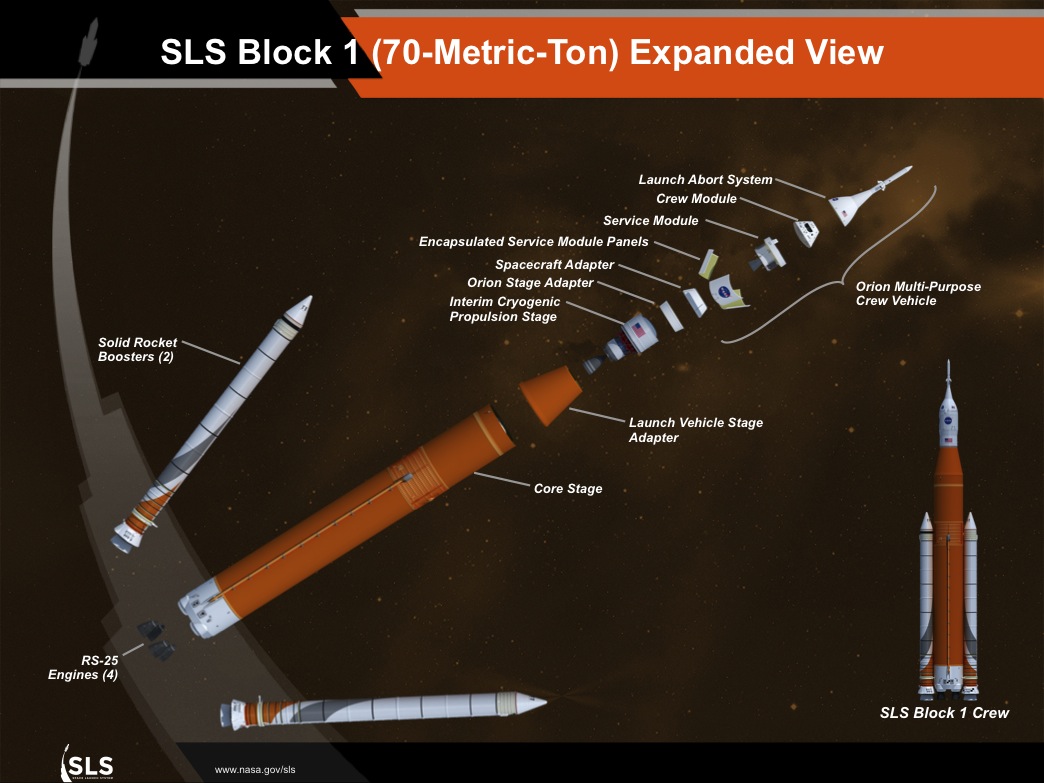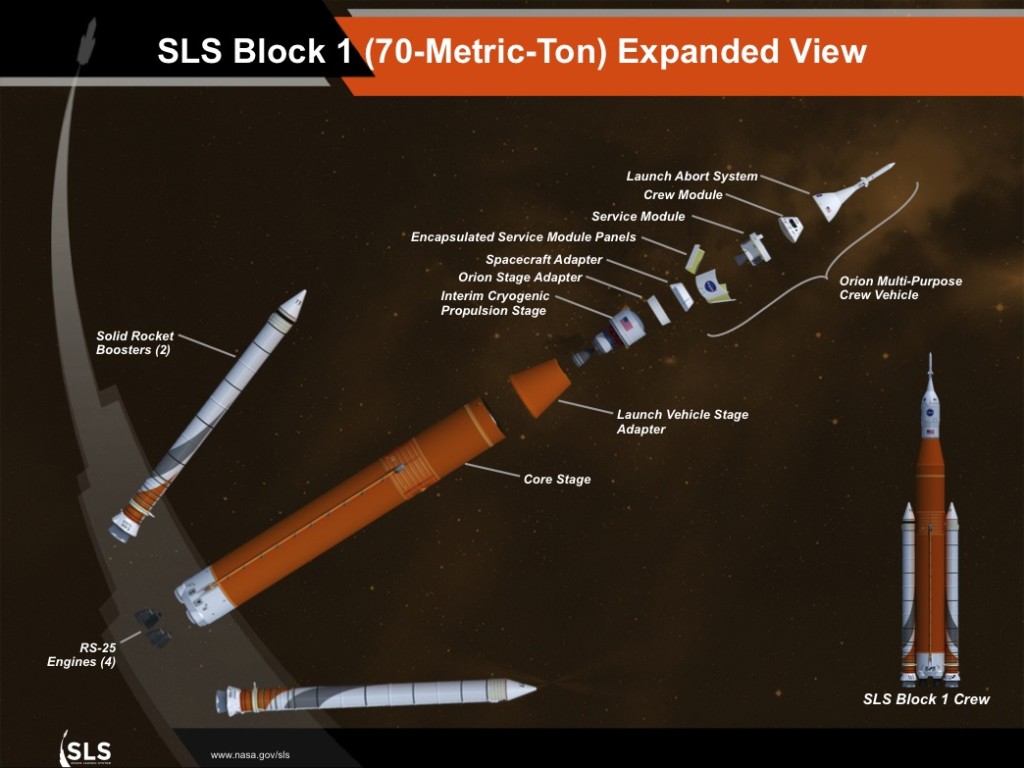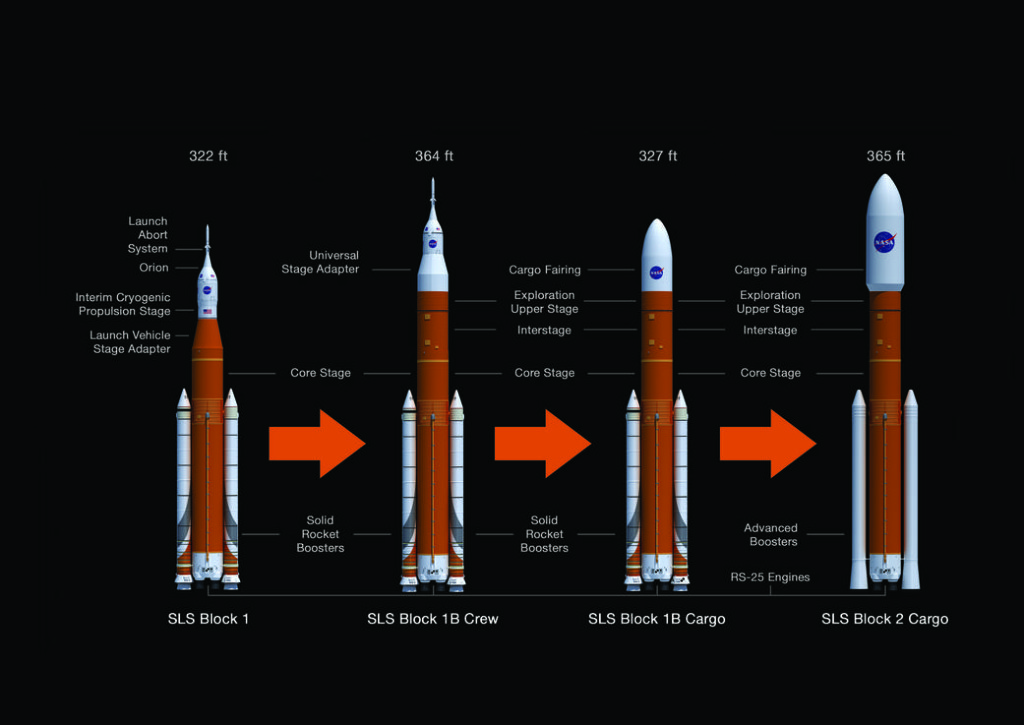The Humans to Mars Summit continues today!
NASA’s plan for reaching the red planet–the Journey to Mars–is a main element in the discussions taking place at this event.
An important piece of this journey is NASA’s new rocket – Space Launch System (SLS). With its flexibility to adapt to different different cargo and crew in the future, it’s a rocket like no other. It will be able to carry the highest payload mass of any rocket in history – a basic requirement for transporting the necessary elements of upcoming missions to cislunar space in the near term and Mars in the long term.
As a heavy lift vehicle, its capability to launch increasingly larger payloads into space makes it a key element of mission architecture.
SLS also features different rocket configurations for different missions. On its first mission, Exploration Mission-1 (EM-1), the configuration will be Block 1. Shown below, this configuration will be the one launching in 2018.
Even though this is the first configuration of the rocket, it will carry the Orion crew module and secondary payloads beyond Earth’s orbit.
What’s happening to prepare for this first flight? Solid rocket booster testing, engine testing, avionics testing and component welding – to name a few mission objectives.
As discussed at the Humans to Mars Summit, after its first unmanned flight, SLS will go on to carry astronauts to the proving ground in cislunar space. Future scientific missions will be enabled by the evolvability of the SLS.
Here are some future configurations of the rocket:
For more about SLS, check out NASA.gov.



